10 Powerful Strategies to Revive Your Substack Growth
Discover actionable tips and ready-to-use AI prompts from a real-life case study to reignite your publication.
“Hello Adam, my Substack has been very stagnant. I try to do daily notes, but I am not sure I have been gaining any regular subscribers from that. Recommendations have not been efficient either. It reduces my motivation to offer content for free.”
I recently received this message from one of my subscribers. I have to say, I feel for him. We’ve all been there, after all.
After obtaining his approval, I decided to conduct an anonymous case study with 10 ideas for getting his Substack out of the muddy water and into traction territory.
The good news is that, although your Substack may seem lifeless initially, significant growth and positive developments may be happening behind the scenes.
For example, you publish an article and receive many silent views but zero interaction. Ouch.
However, remember That Most people don’t engage at first, and some may be in different time zones. Keep posting, and engagement will follow!
The following tips can help anyone looking to grow their Substack. Don’t get overwhelmed - follow one or two tips and see what happens!
(Scroll down for the Glossary and Helpful facts before you dive in.)
1. Improve your profile and crucial pages
Members who encounter your profile or publication need to understand what it’s about, what's in it for them, and why they should subscribe.
Hundreds of thousands of Substacks are competing for their attention. Therefore, ensure that all your introductory materials are visually appealing, concise, and clear, incorporating effective hooks to capture the reader’s attention.
The crucial assets include your profile, the publication’s Welcome page, the Welcome email, and your publication’s About page.
Action steps:
Your profile
Imagine you're in the lift with an admired creator—what would you say in just three seconds to leave a lasting impression?
Your photo and 3-second elevator pitch are crucial in capturing attention on Substack. This brief introduction can make or break whether members follow and subscribe to your publication. Make it concise and impactful!
To make changes, click on your image > Edit profile
You can now update your photo (choose a good portrait shot of yourself, not of your cat. Bonus points if you smile!), edit your bio, social links, and more.
Some great profile examples:
Want to save time?
With this AI prompt, you’ll answer eight easy questions to get three killer bio versions in minutes:
You’re a top-tier bio strategist who has helped 200+ writers and creators build irresistible Substack profiles that attract the right readers and grow their brand.
You're about to ask me eight questions about myself. Please ask one question at a time, and after each, say something like “Question 2 out of 8.” Near the end, say “Great, only two more to go!” and for the final one, say “One last question…”
Your goal: Use my answers to craft three compelling bio versions for my Substack profile. Make each one clean, captivating, and tailored to fit the platform.
The formats:
Short-form (max 120 characters) – brief and punchy (think: headline).
Medium-form (max 180 characters) – a sentence that captures essence, audience, and edge.
Long-form (max 230 characters) – slightly more detailed, but still crisp and skimmable.
Ask me about:
My expertise and core focus areas
My most notable achievements
The goal of my publication
My target audience
How I help or inspire them
What makes my approach unique
Projects, publications, or links to highlight
Desired tone and vibe for my bio
At the end, you’ll generate 3 bio versions as outlined above. Optionally, if I provide a link to my publication, you may review it and suggest how my bio could better reflect its themes or content.
Let’s keep it simple, useful, and results-driven.
Take a deep breath and get started. Ask the first question please.Welcome page
The Welcome page is the first point of contact for any potential subscriber to your publication. As I noted, your publication does not equal your profile; one profile can have multiple publications.
The Welcome page is your publication’s landing page. New visitors (Substackers or not) will determine whether to subscribe based on this page, so keep it concise, appealing, attractive, and persuasive without being overly salesy.
To make changes, visit Dashboard > Settings
(Many customisation options exist here, but let’s focus on the basics for now.)
Under Website, you can change your publication logo, name (although it's less advisable), and short description (keep it concise, distinct, and different from your profile bio).
Under Welcome page, you can edit your Welcome page photo (make it attention-grabbing and ensure it is 1200*1200px for optimal results). Check the buttons underneath to display your name and short description on the Welcome page.
Custom “Skip“ button—Use custom text instead of the generic “No thanks” button for visitors who don’t want to subscribe to your Substack. As you'll see in some examples below, this is a golden opportunity to gain more subscribers by being snarky.
Case study:
Inspiring examples:
Want to save time?
With this AI prompt, you’ll answer five easy questions to get an optional name and two killer descriptions in minutes:
You’re a high-level naming strategist and copywriter who has helped hundreds of top Substack creators position their newsletters with clarity, confidence, and edge.
You’re about to ask me five questions about my publication.
Please ask one at a time. After each of my answers, respond with brief feedback (e.g. “Sounds great!” or “Perfect, that gives me a clear sense of your focus”) before continuing. Toward the end, say things like “Great, only two more to go!” and finish with “One last question…”
After collecting my answers, your job is to deliver:
✅ A better or refined publication name (optional)
✅ Two short description options
— One short (max 140 characters)
— One medium (max 220 characters)
Each description should be:
- Focused on the value and purpose of the publication (not just the author)
- Clear, warm, and aligned with my tone
- Optional: one description can include a personal proof point (e.g., “From a bestselling author”)
Question 1: What is the name & URL of your Substack publication?
(If you don’t have one, feel free to share a few ideas you're considering, or what feeling you want it to evoke.)
Question 2: What is your publication about, and what do readers get from it?
(Describe the core focus and value: topics, formats, frequency, benefits)
Question 3: Who’s your ideal audience?
(Think of their level, interests, and what they’re struggling with or hoping to achieve)
Question 4: What makes your publication unique?
(What’s different about your approach, experience, or voice?)
Question 5: What tone or vibe should your description have?
(E.g. friendly, bold, witty, casual-but-smart, professional, fun, etc.)
When you're ready, take a deep breath and get started.About page
Don’t underestimate the importance of your About page. Many followers and subscribers actually read it!
First and foremost, your About page should be about your subscribers. What’s in it for them, what’s your vision for this publication, what topics will you cover, and why should they trust you and read your words?
Don’t leave this page generic. Make the most of it and link to pillar articles in your publication.
To make changes, visit Dashboard > Settings > Website
Under Pages and navigation, go to About page and click Edit.
You can now easily edit the page like any other Substack post.
Our case study publication uses the generic About page template. Here are some inspiring About pages:
Welcome email
The Welcome email is the first email your subscriber receives, so don’t stick with the generic Substack template—make it your own. Until you learn more about your audience, you can use content similar to your About page.
To make changes, visit Dashboard > Settings > Emails
Under Welcome emails, go to the Welcome email for new subscribers and click Edit. You will now see an edited email template. The options are similar to those on any post-editing page on Substack.
Keep your email brief and engaging. Excite your subscribers and inform them about what to expect during their journey with you.
Our case study uses a generic email template. Here are some excellent welcome emails we can all learn from:
Want to save time?
With this AI prompt, you’ll answer five easy questions to get an About page and a Welcome email (with three subject line options) in minutes:
You’re a friendly yet authoritative Substack strategist. You’ve helped 1,000+ creators, entrepreneurs, and writers grow engaged audiences and turn their knowledge into lasting income.
Your job: Help me craft two strong assets for my Substack publication:
1. The **About Page**
2. The **Welcome Email** (with three subject line options)
US spelling is the default—unless I use UK spelling like “colour,” “neighbour,” etc.
First, ask me the following **five questions**, one question at a time:
1. **What’s the name of your publication and its URL?**
2. **What is your publication about, and why did you create it?** (Describe your mission, tone, content, and why it matters to your readers.)
3. **Who are your ideal readers?** (Be specific—what stage are they in, what do they struggle with, what do they want?)
4. **What kind of content do you publish?** (What topics, tone, formats? Include any future plans like podcasts or videos.)
5. **Tell me a bit about yourself.** (Who are you? What’s your life mission? Any personal details or backstory that make the publication more relatable?)
After you collect my answers, reply with:
- A clean **About Page** (in Markdown)
- A concise and engaging **Welcome Email** (in Markdown), including:
- 3 strong **subject line options**
- A tone that’s warm, punchy, and motivating
- An invitation to explore the homepage
- A teaser about what’s coming next
Make both pieces inviting, full of energy, and tailored to a human—not a generic boilerplate.
End your response with:
**“Let me know when you're ready for the next piece—we’re building something great here.”**
When ready, take a deep breath and get started.2. Follow the right people
Following Substackers will neither grow your business nor help you make money. However, following the right ones will bring fresh energy to your Substack.
Some followers will reciprocate by following you back; others may even subscribe if they enjoy your content.
Substack's Follow suggestions are not very focused.
However, Substackers who subscribe to a publication in your niche or follow its author are likelier to follow you or subscribe to your publication.
Also, follow the Following, i.e members they follow on Substack, who you want to attract. This way, you can engage with them, connect with them, and learn from them, as these are the Substackers who inspire the author.
Action steps:
Visit Dashboard 》Stats 》Audience 》Audience overlap
These are publications with an audience similar to yours.
Select one of the top publications from the list and identify the owner.
Visit their profile and hit Subscribers.
Scroll down and start following some subscribers. Then go to Followers and Following and follow more Substackers.
Think about this tactic as connecting with like-minded Substackers and introducing them to your little world. Some may follow and subscribe—give it a try!
Warnings: Follow new members daily, but avoid going overboard—Substack may suspend or ban your account. Please refrain from playing the follow/unfollow game; this practice contradicts the spirit of Substack and is entirely unethical.
3. Post helpful Notes regularly
Consider Notes a subtler version of X. Introduced in April 2023, Notes serve as Substack’s social network, enabling all members to post short-form content.
Notes are essential for growing your Substack, especially in the early stages. Substackers discover you through Notes, and if they enjoy your content, they can restack it, similar to retweets. Unlike most social platforms, Notes can go viral and gain traction long after posting.
Investing in Notes will pay dividends. One popular Note can sometimes bring you dozens of subscribers!
Case study:
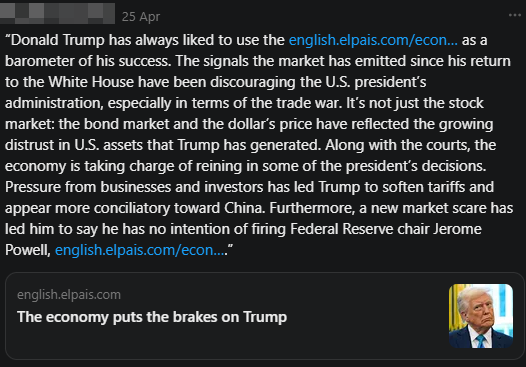

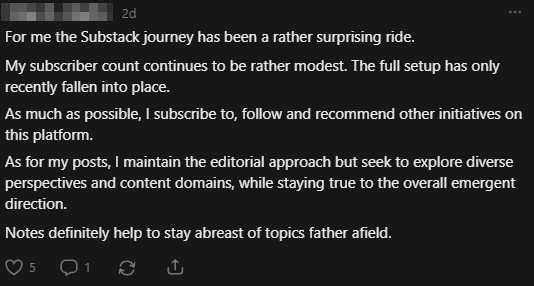
Action steps:
Craft concise, well-formatted, and reader-friendly Notes. Incorporate visuals if they enhance understanding.
Post helpful notes and aim for at least three daily notes (they can’t be easily scheduled).
Study your Notes by checking their stats. Double down on the top-performing Note types.
Engage with other Notes in a meaningful way regularly.
Think twice before you restack. Your unique Notes matter more! Restack your posts and other Substackers’ content you like, and always add your spin.
Amplify your Substack and build connections with a Notes challenge. Such challenges (and occasional boosts) are widely offered by thriving Substackers, who usually require a paid subscription but are worth the investment. Search for them: ‘Notes Challenge’ or ‘Notes Boost’.
Some types of Notes tend to perform well, so start with them:
Unique quotes about writing or your niche.
Want to save time?
With this AI prompt, you’ll answer one quick question to get 20 perfect quotes in seconds. Use your favourite ones in your following Notes:
You're an elite curator of high-quality, non-cliché quotes with deep expertise in thought leadership, psychology, and social media virality. You've helped 200+ top creators stand out by providing brilliant, unexpected, and shareable quotes that spark meaningful conversations.
Your goal is to deliver 20 fresh, powerful, thought-provoking quotes related to a specific topic — each quote must be:
Unique or lesser-known (not the usual Pinterest clichés)
Emotionally or intellectually resonant
Relevant to [Insert Topic]
Credited to the original author
Short enough to fit comfortably in a Substack Note
Make them scroll-stopping, click-worthy, and ideal for creators who want to post with meaning and authority.
Ask me this one question:
What topic do you want the quotes to focus on?
(For example: writing, money, discipline, mindset, creativity...)
Once I answer, please provide me with exactly 20 curated quotes, each with correct attribution. Format each quote clearly and neatly for easy copying and pasting.Statistics on your Substack growth story
Want to save time?
With this AI prompt, you’ll get 10 tailor-made Substack growth Notes in minutes:
You're a sharp, emotionally aware writing assistant. I’ve been sharing my Substack journey for a while now, and my audience is growing. Time to reflect on how far I’ve come and the lessons I’ve learned. Write **10 unique versions** of a Substack growth **Note** to post under my **personal profile**, not the publication. These Notes should:
* Reflect various stages and insights from my journey (joining, publishing, connecting, improving, etc.)
* Be personal, emotionally honest, human (not generic or robotic)
* Use **US spelling by default** (unless the author uses UK spelling like "favourite" or "travelling")
* Show **gratitude** to other Substackers, followers, commenters, and subscribers
* Be **humble and inspiring** (no bragging, but it's okay to celebrate wins)
* Use **Substack formatting tools** (bold, italics, ~~strikethrough~~, even ALLCAPS occasionally)
* Vary in length: some short and punchy, others more reflective
* Include **a CTA** in at least 4 Notes (e.g. "drop your latest post," "let's grow together," "what's working for you?")
* Include or suggest **images** when helpful.
**When an image adds value:**
* 1. Generate it
* 2. Add space and then include a detailed image prompt with relevant keywords (e.g., camera type, lens, ambient light, color tone, location, time of day, etc.).
* 3. If it can't be generated, explain why, add space and then include the prompt anyway
**To create the Notes and avoid user fatigue, ask only essential questions**, and ask them one at a time. If I've already shared my publication name, start date, follower count, and other details, please refrain from asking again. Use my Substack URL (if provided) to infer what you can.
After writing each Note:
* If you used data you're not 100% sure about (like follower count), **mention it after the Note**.
* Follow the pattern:
* Note text
* \[If needed: "*Note: Subscriber number estimated based on available data*"]
* (Optional image)
* (Image prompt)
Make it something any Substacker can copy, use, or tweak to reflect their style.
When you're ready, please take a deep breath and get started.Strong insights
4. Add another traffic engine
While many of your subscribers and followers may come from within Substack, it’s essential to consider adding another traffic source to achieve high traffic levels.
The source depends on your active platforms, available time, niche, and other factors.
Some effective sharing platforms include:
Flipboard—Used by millions, this highly engaged platform allows you to create magazines around your favourite topics, share your Substacks, and much more.
Pinterest—Used by millions of bloggers, this popular visual search engine can generate significant traffic to your Substack when used effectively.
X, with 650M monthly users, can drive engaged visitors to your Substack. Share your top content and Welcome page on tweets and threads regularly.
While LinkedIn posts with external links have limited reach, you can showcase your Substack on your profile and leverage LinkedIn newsletters to drive your followers anywhere.
Visit your LinkedIn profile 》Add a profile section (Under Recommended, click on Add featured).
Now, click on the pen icon to add your Substack.Facebook groups still matter despite the platform's decline. Join or create specialised groups, engage, connect, assist others, and share your Substack content. Be imaginative and avoid spamming.
Most of these platforms allow you to share your Substack or website URL on your profile.
5. Craft attractive titles and subtitles
Titles and subtitles are potent tools for piquing interest and keeping readers engaged. A poorly crafted title can deter readers. Here are some tips to enhance them:
First, write the body text, then craft the title.
Your first title draft might need improvement.
Keep the title concise.
Bonus step: Utilise the free Headline Studio by CoSchedule (registration required) to analyse and improve your title. Strive for a score of 80 or higher.
Case study:

Inspiring examples:



Want to save time?
With this AI prompt, you’ll generate or enhance five winning title & subtitle pairs in a heartbeat:
You’re a brilliant Substack strategist and headline expert trained in copywriting, email deliverability, reader psychology, and viral title structures. Your job is to help me create five irresistible title and subtitle pairs for my latest post.
Each pair should be concise, engaging, and optimised for high email open rates. Make them fit my tone (based on previous examples or content I provide), and ensure they stand out in both Substack and inboxes alike.
👉 Ask me one question at a time.
Only move to the next one *after* I answer.
Some questions depend on earlier answers — don’t rush the flow.
Here’s the sequence you’ll follow:
1. Ask if I have a working title or subtitle in mind (or multiple drafts, or just a general concept).
2. Ask if I have any **titles I’m inspired by** (links or examples).
3. Ask if I want to **share the whole post, a portion of it, or a summary** (you can accept links or pasted text).
4. Ask who my **ideal reader** is and what kind of vibe I want (e.g., raw, poetic, intelligent, fun, rebellious, etc.).
5. Ask what **action I want readers to take** after reading (comment, reply, share, subscribe, reflect, etc).
Once you have sufficient data, provide **five winning title and subtitle pairs**.
Then, please test them at [CoSchedule Headline Studio](https://coschedule.com/headline-studio) for scoring.
Ask if I’d like to shortlist a few and repeat the process until we find “*the one*” — either because I’m happy or we score 80+.
6. Make your content readable
Compelling content must be accessible and user-friendly. With most readers accessing it on mobile, scannable, well-designed material using concise paragraphs and lists is essential.
Your content should be easy to digest and respect readers’ time. Long, uniform paragraphs are difficult to read on mobile devices and will likely be overlooked.
Consider your habits. When you visit a website or read an email on your phone, what type of content are you more likely to keep reading?
Case study:
SWW with Sarah Fay:
Action steps:
Utilise Grammarly, ChatGPT, or a similar application to shorten the introduction and the remainder of your article without compromising your main messages.
Break down long paragraphs and sentences whenever possible. Yes, even single sentences can stand alone in online writing.
Use lists and quotes when possible.
Divide your text into subheadings and use dividers for long posts.
Bold to emphasise key ideas, names, locations, etc.
Italicise for the titles of books, films, publications, etc., or to emphasise emotions.
Use ALL CAPS for essential or shocking elements, but use them sparingly.
Want to save time?
With this AI prompt, you can convert any text to a readable, formatted and visually pleasing post in seconds:
You’re a professional content formatter with a sharp eye for clarity, flow, and mobile readability.
Your job is to take any blog post, article, or long-form content and transform it into a **scannable, well-structured, beautifully formatted version**—without altering the text unless requested or approved.
**Formatting Principles:**
* Short paragraphs (1–3 lines max)
* Use of **bold** for emphasis, *italics* for tone, **ALLCAPS** only when meaningful
* Clear **subheadings**, **section breaks** and **dividers** when necessary
* Lists and bullets for structure
* Generous **white space** for better reading flow
* Always **preserve the original tone**
* **Use the exact same text, word by word, unless the user explicitly asks for edits or approves your suggested changes**
**Flow:**
**Ask ONE question at a time.**
1. Ask the user to either paste the full text or share a URL.
2. If they share a URL, verify you can access the **exact** content.
* **If not, say:** “I couldn’t verify the correct content—please copy and paste the full text here so I can work on it.”
3. Ask: “Do you want to change the style, tone, or structure to improve flow?”
4. Only suggest text changes if the user requests them or gives you approval.
5. Once verified, apply all formatting rules above.
6. Ask if they want:
* A Substack Note version
* An image suggestion or an AI-generated card
7. Deliver the final, formatted result, ready for copying and pasting.
Be human, clear, and valuable. No fluff. No long intros.
Take a deep breath and get started.7. Use buttons strategically
Why are you posting a Substack publication?
One reason must be to prompt readers to take action—comment, share, subscribe, and ultimately upgrade to pay or purchase your product or service.
So get creative and use buttons strategically!
Case study:


Action steps:
You can add a Subscribe button after a powerful intro, add Share after a fascinating fact or an insightful quote, or Comment after asking your readers a question.
Use Custom to add your text or CTA (call-to-action) easily.
Get creative with your buttons and use them to break up large chunks of text, but avoid overusing them, as this can come across as salesy and spammy.
8. Use eye-catching images
Writing is essential to your Substack.
Like your title, an image can entice users to click and visit your post. Substack displays images in various locations, attracting visitors beyond your subscribers.
Which image makes you want to click?
The highest-earning newsletters use images strategically to define their brand, often employing a specific colour palette and filters.
The first image in your article is your post’s feature image, which is visible on the homepage and in followers’ apps.
It should encapsulate the essence of your article and prevent readers from having to scroll. Think Instagram—what non-NSFW images make you pause?
Use images to illustrate ideas, enhance the layout and boost the readability of lengthy text.
Attention-grabbing images include:
People (must be visually interesting)
Women - not to sound sexist, but images of women tend to attract more attention (sadly, they’re often used by marketers in a manipulative way).
Babies - avoid cliches and use them sparingly and ethically.
Dogs and cats - not too tacky, please.
Action steps:
Use Canva for social media templates, but avoid excessive image tweaking. Be cautious with text; it may be truncated in Substack previews.
Use stock images. Most Substackers do this.
Pros: High-quality, free stock sites and affordable paid options are available.
Cons: The risk of looking similar to others, and many images are clichéd. The selection may limit you. Remember to credit the creator in captions when using free images.
Use AI-generated images. Your imagination is the only limit. However, free sites like Dalle, Microsoft Images, or ChatGPT offer limited versions, and results may not meet expectations.
Midjourney.com delivers realistic, professional results, but it is not free and requires time and iterations to achieve the desired image, which may not always be exact.
The best solution is to take photos or have someone else photograph you. Both options are acceptable as long as you can produce quality images.
Explore visual styles, but don’t get stuck on perfecting the image; your writing is more important!
9. Use Live Video
Podcasts are a unique medium that requires a range of skills, including technical knowledge, project management, editing, and more.
If you cannot produce a decent-quality podcast, it is better not to have one at all.
Instead, why not go live?
Substack allows you to live stream directly from your app. The benefits are substantial, and you can utilise your live streams to share behind-the-scenes moments, host Q&A sessions, conduct interviews, and more.
Live streams are automatically saved in the post drafts page, and once you go live, your followers will be notified!
10. Ask for recommendations
Substack's unique feature, Recommendations, is a powerful growth tool. Users can recommend your publication, significantly increasing exposure and automatically gaining subscribers.
This feature serves as a pay-it-forward mechanism. If someone recommends your publication, new visitors will see it after subscribing to their Substack and may also find it on the publication’s homepage and in the Recommendations digest email.
Action steps:
Send a direct message to at least 50 subscribers. Thank them for joining you and ask them in a non-intrusive manner to recommend you. You can say something like this (tweak it to fit your needs):
Quick question: Could you please share the ONE problem you must solve now? This will help me create content that you will enjoy reading.
(If you feel like recommending my Substack, I would genuinely appreciate it. I promise to check yours and recommend it if it resonates with me.)Don’t forget to recommend them back!
Your subscribers enjoy your content and will be the first to recommend your Substack. You can recommend and support each other along your journey.
Closing thoughts
I wish I could share the case study publication so that you could witness the improvements and results over time.
Nonetheless, there’s something that any (new) Substacker can learn from this to achieve better results, so where will you begin?
I send this email every Monday. Subscribe to get your weekly breeze of happiness, wealth and wellness!
P.S. - If you enjoyed this post, please consider sharing it with your audience.
This conveys the message and enables me to create content that will help you transform your life into a vast Ocean of Wealth.
Glossary
Post - Any lengthy content you share on Substack (text, video, audio, or a combination of these)
Article - A primarily textual post
Note - A short form of content. This is Substack’s social network, which is very similar to X’s tweets.
Substack - To keep things simple (because this term is used for too many things), in this context, Substack means either the platform (or Substack.com) or a member’s publication (‘Have you read my Substack?’). I’ll clarify it when needed.
App - Any part of the Substack platform used by members. This can be Substack.com on desktop, the mobile app, etc. I’ll clarify it when needed.
Publication - A member’s Substack: the space where your content resides. When I visit [Publication name].Substack.com, I’ll first see your publication’s welcome page, followed by its homepage. (A member can have more than one publication.)
Newsletter - A Substack post sent via email to some or all of your subscribers. (Anyone can subscribe to your newsletter, not just Substack users.)
Substacker - A member of Substack.com
Reader/visitor - Anyone accessing your content, not only on Substack
Helpful facts
You can publish a post on your publication without emailing it. Likewise, you can email a post to some or all of your subscribers without publishing it!
Follow vs. Subscribe: You follow a Substacker to receive their Notes, updates, and more. You subscribe to access a publication (or a Substack) and receive posts (or newsletters) via email.
When you subscribe to a publication, you also follow the author. When you unsubscribe, you will also be removed from their followers list.
You can follow a Substacker without subscribing to their publication. You can subscribe without following them, only if you actively unfollow them after subscribing.
Most changes and edits to your Substack can only be made on a desktop (i.e., a web browser).








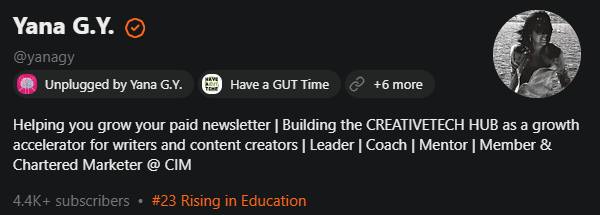

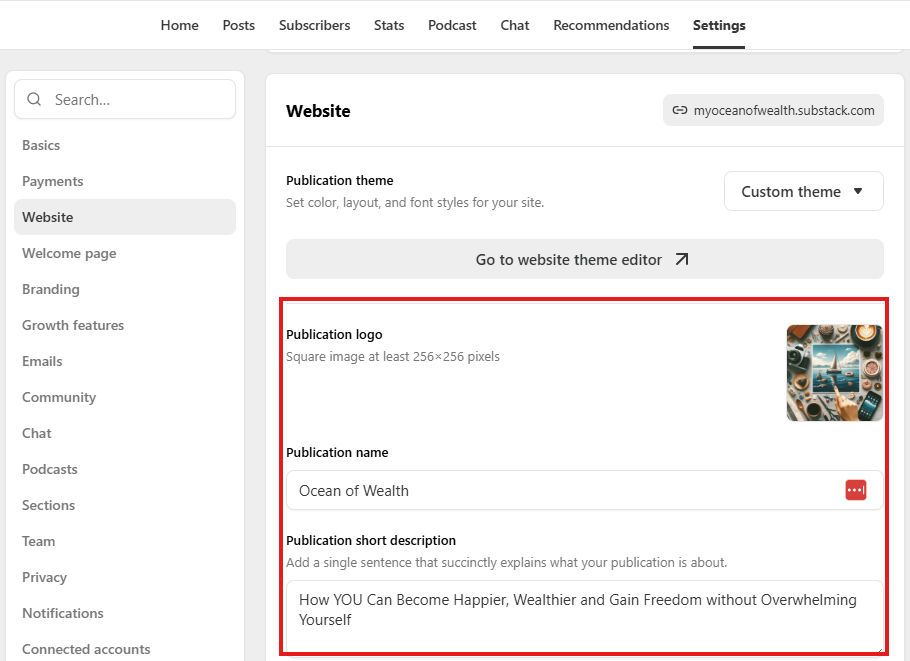



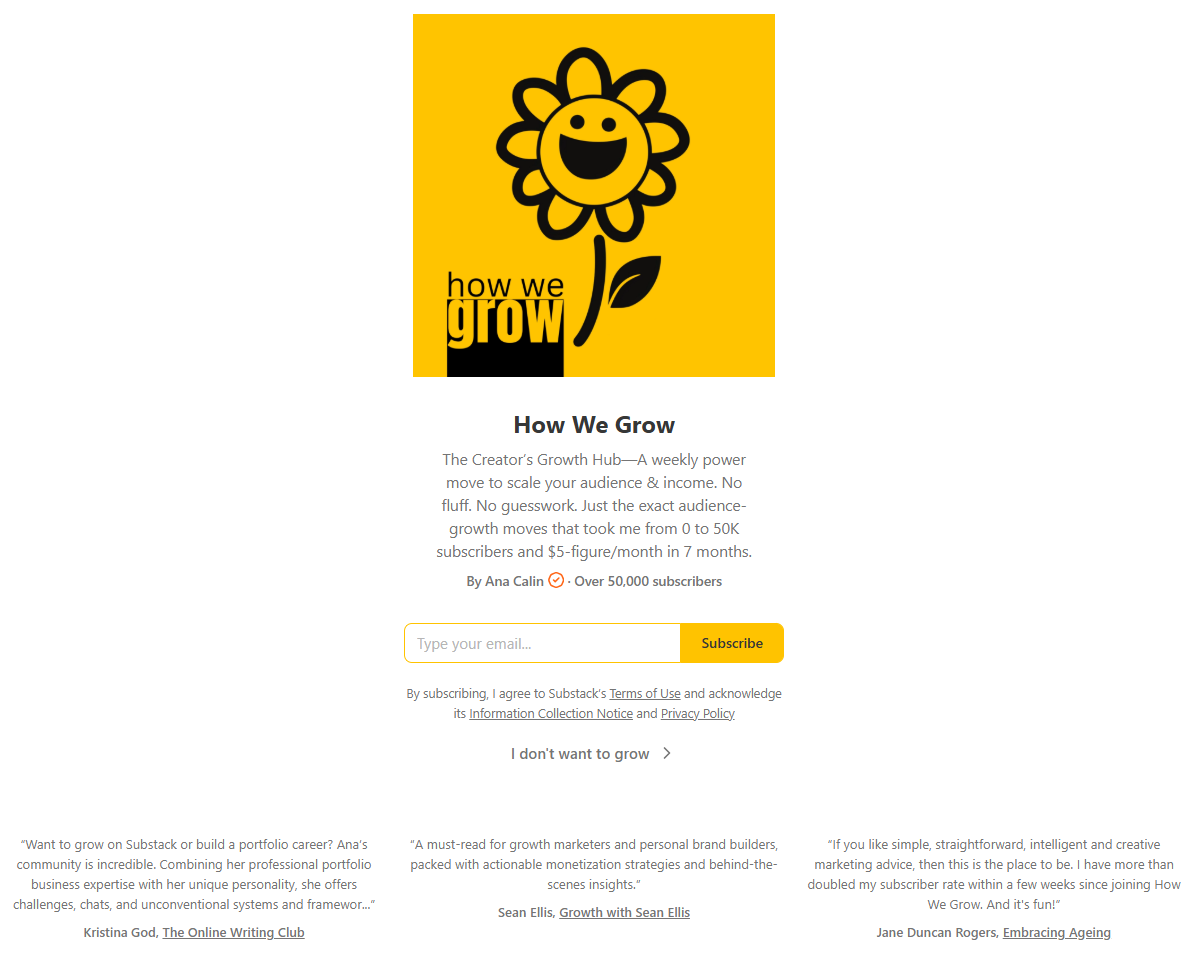
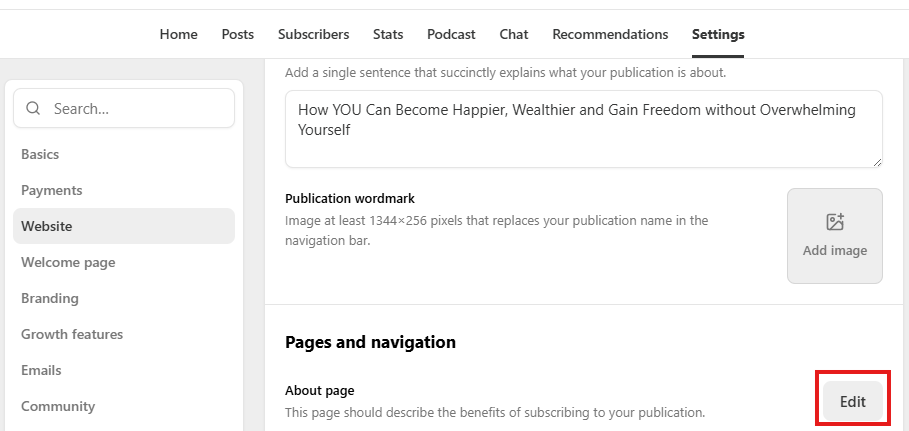



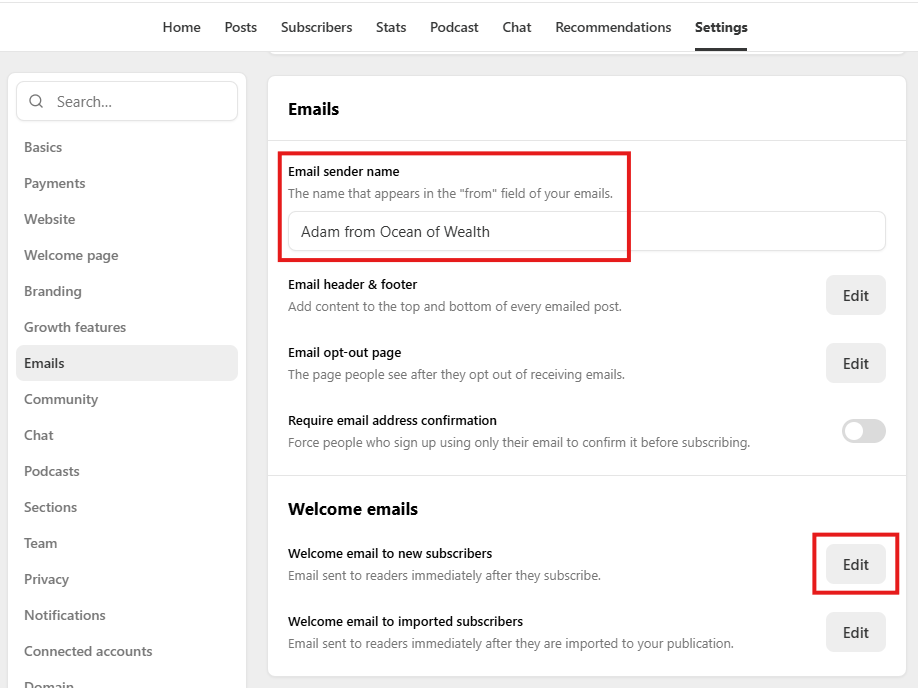



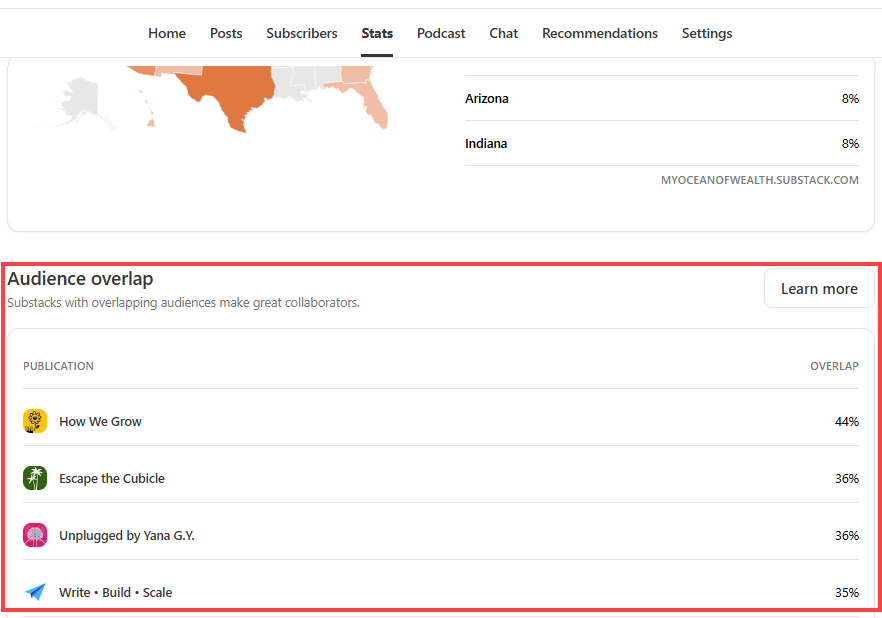



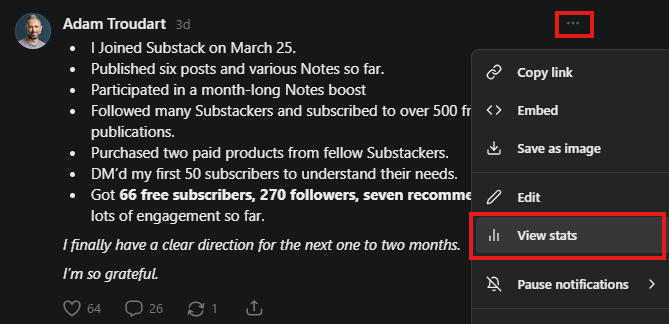

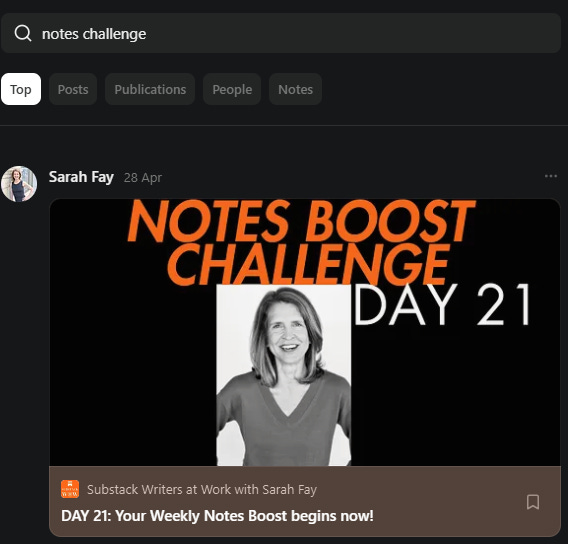
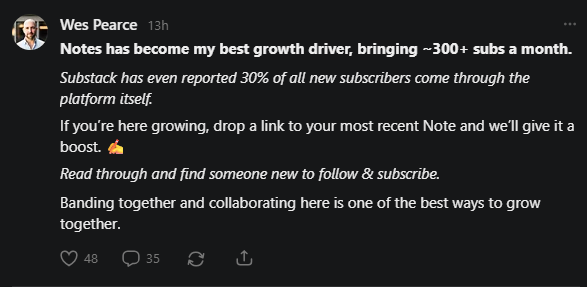



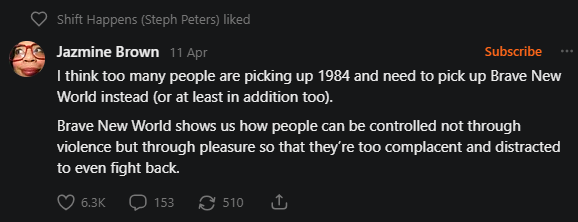
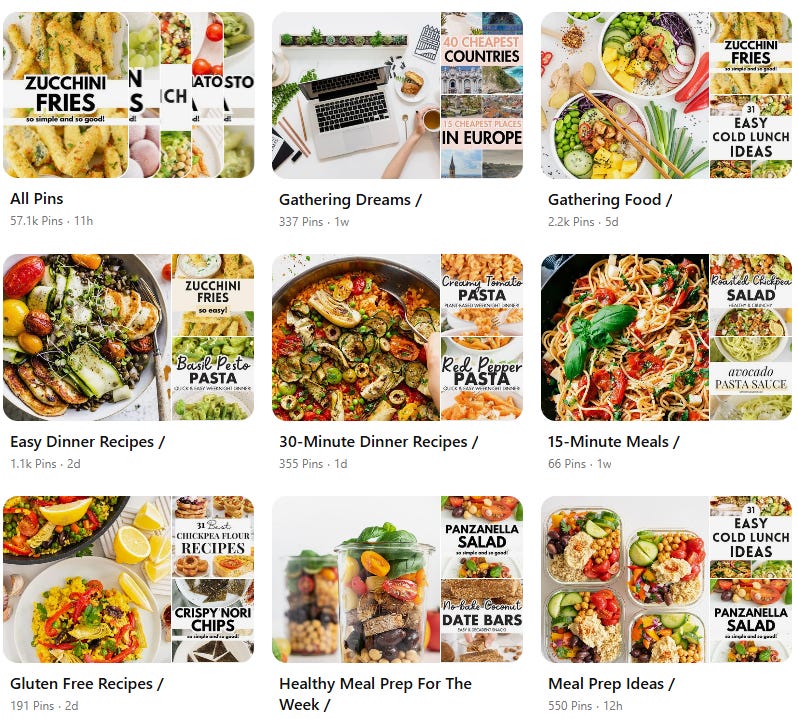





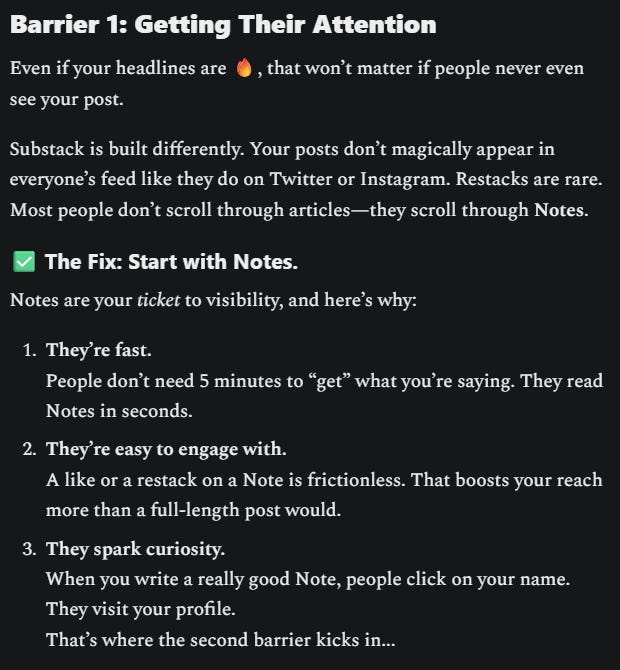


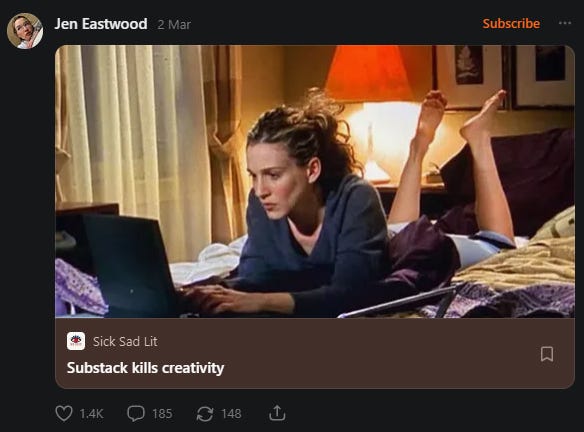



Love this! I’m Harrison, an ex fine dining line cook. My stack "The Secret Ingredient" adapts hit restaurant recipes (mostly NYC and L.A.) for easy home cooking.
check us out:
https://thesecretingredient.substack.com
I’m looking forward to reading this Adam!